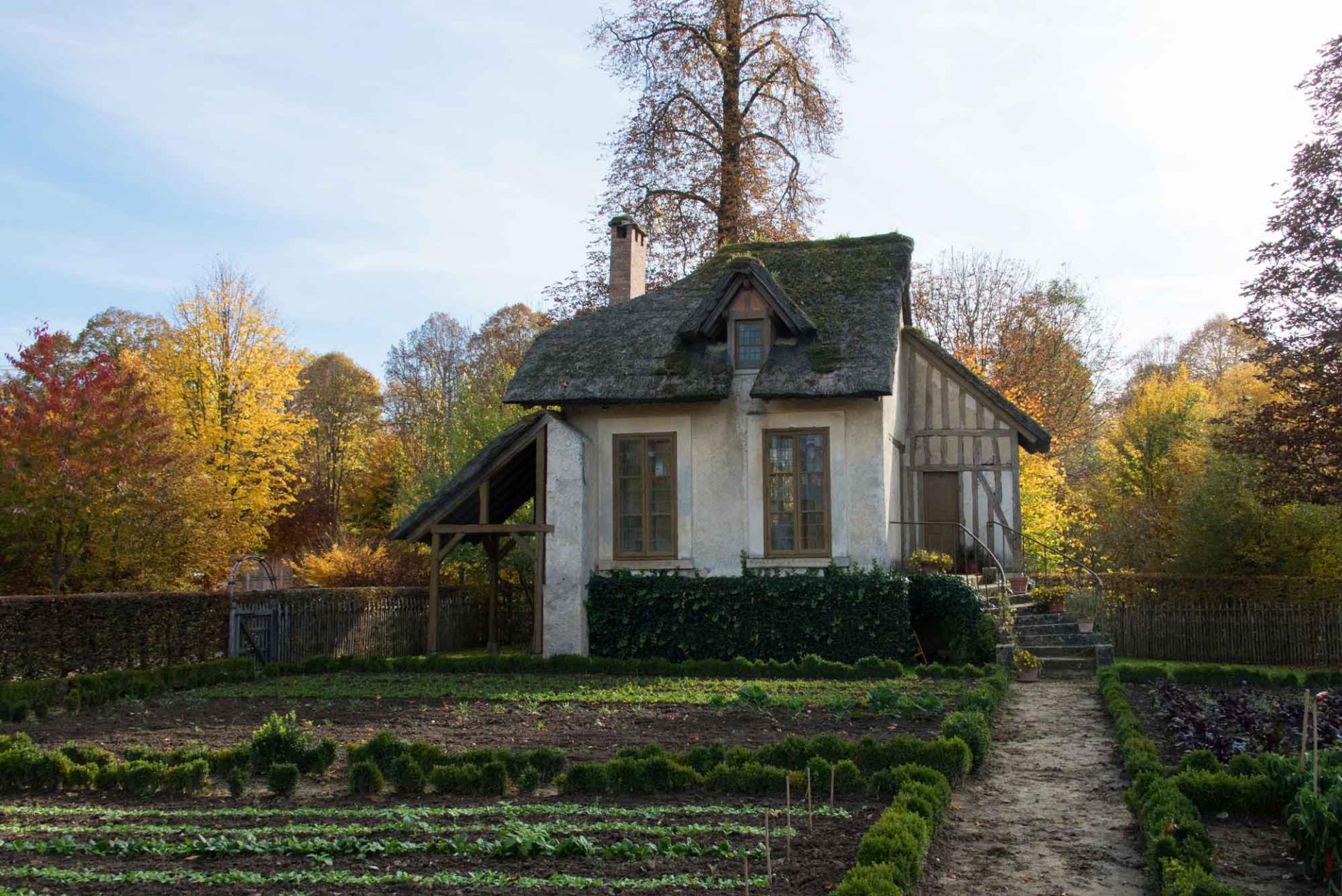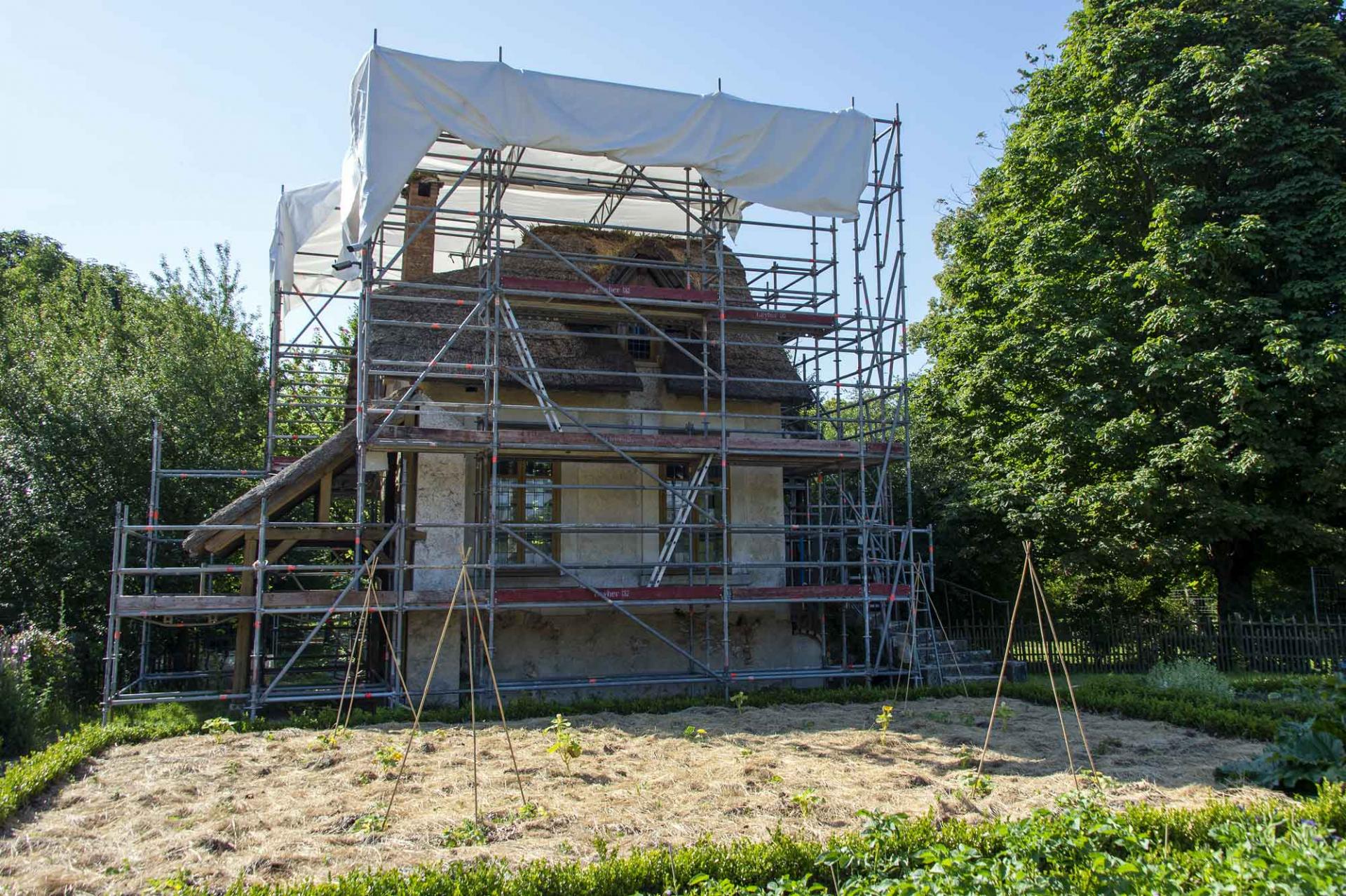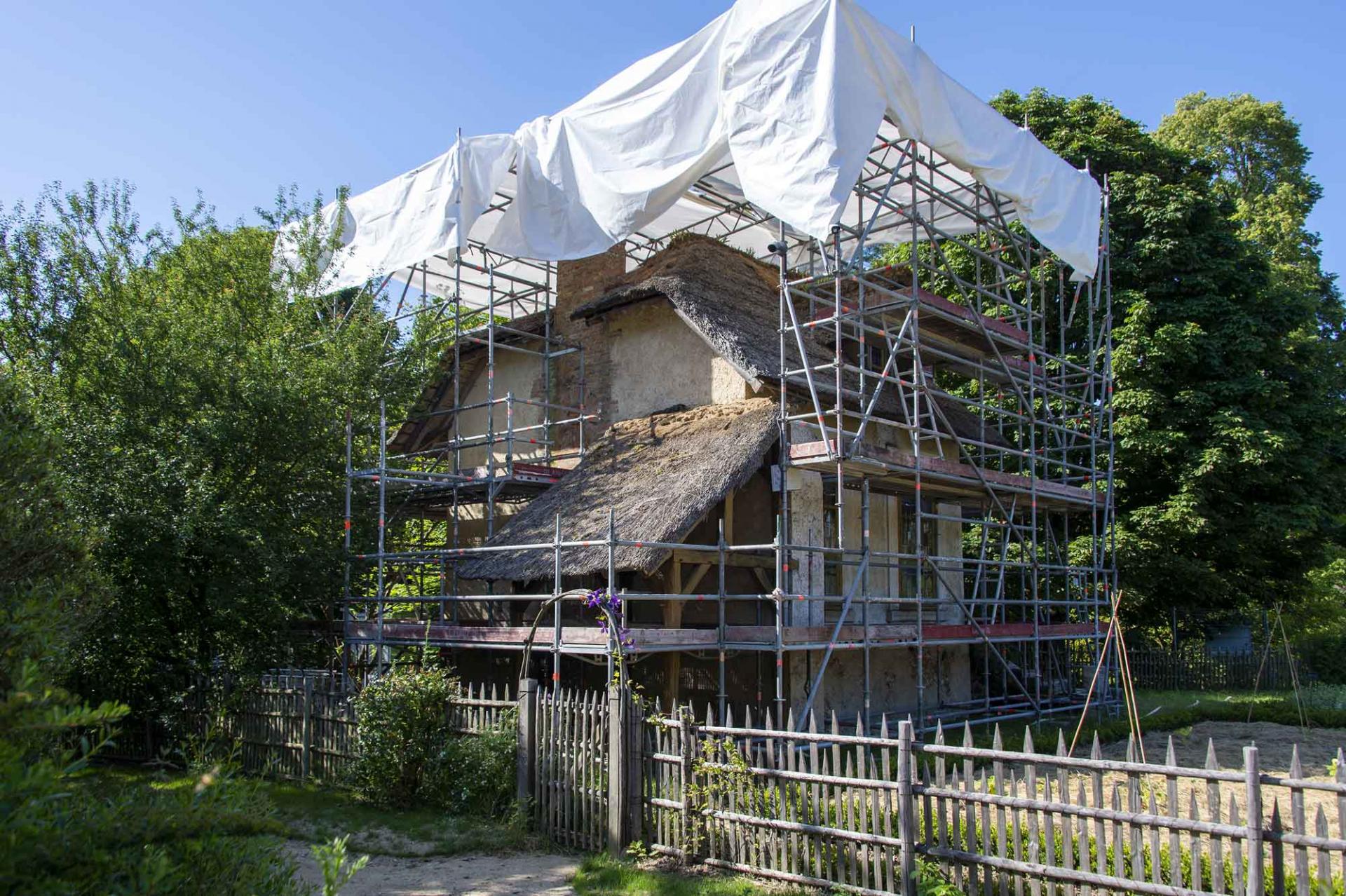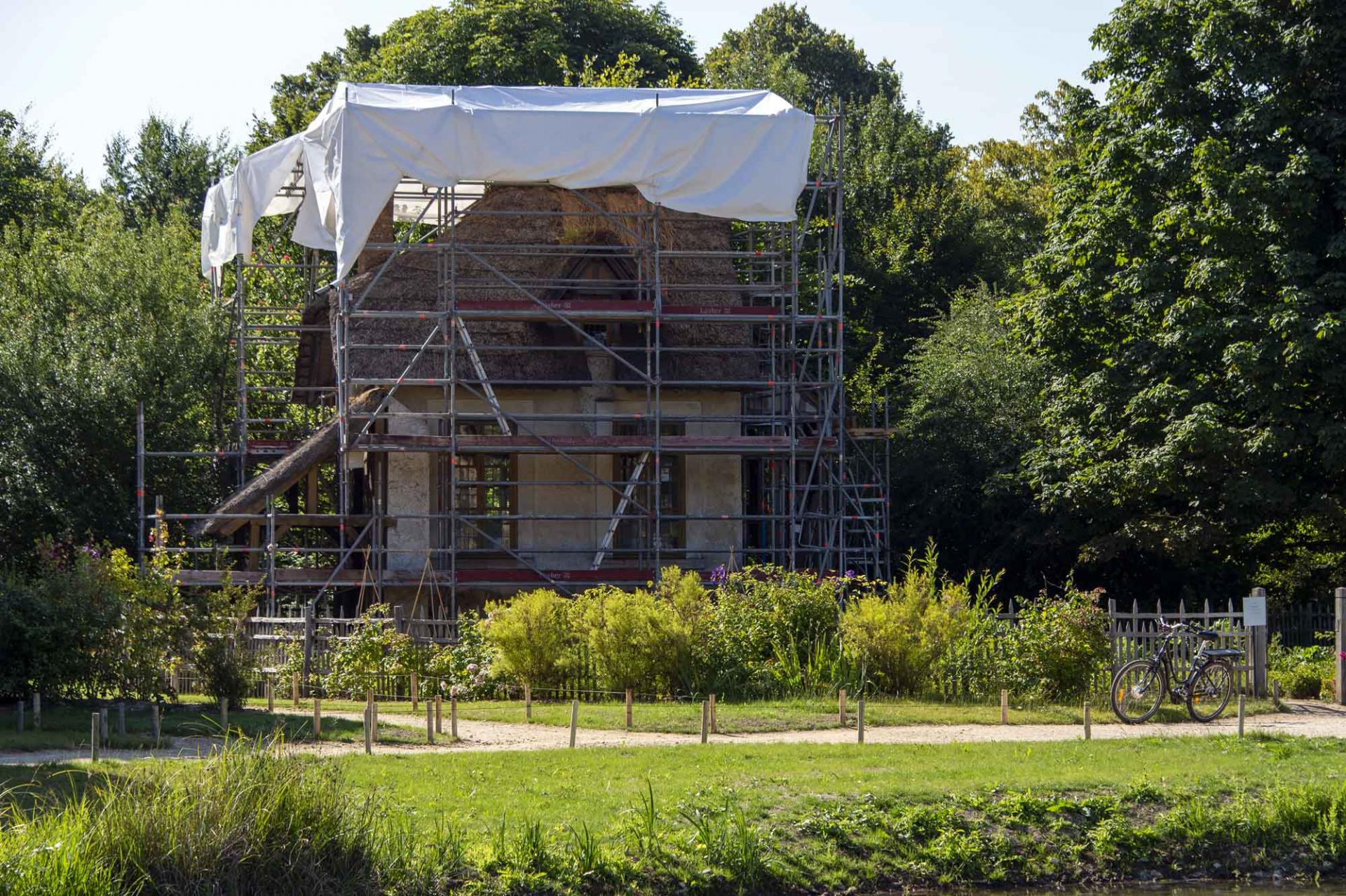The Boudoir was a reception venue with an elegant interior (white marble, parquet and mirrors) that was reserved for the Queen’s most privileged guests. It is currently undergoing full restoration both inside and outside.
Please be aware that there are fake booking websites. Book your tickets on the official website of the Palace of Versailles : https://billetterie.chateauversailles.fr/index-css5-chateauversailles-lgen-pg1.html

The Boudoir of The Marie-Antoinette’s Hamlet
The Boudoir was a reception venue with an elegant interior (white marble, parquet and mirrors) that was reserved for the Queen’s most privileged guests. It is currently undergoing full restoration both inside and outside.
Two previous restoration campaigns had been carried out on the Boudoir. The first was during the First French Empire (1810-1813), just 30 years after its construction and after a period of relative abandon following the fall of the Ancien Régime.

The restoration was accompanied by modifying its interior decoration (fireplace, hangings) and refurnishing it in First Empire style. Outside, the stone staircase was repaired but the old pergola was not rebuilt. The garden was turned into a lawn with serpentine paths according to the fashion at the time and as part of a general redesign of the Hamlet.
Between 1930 and 1933, a second restoration campaign was conducted by architect Patrice Bonnet thanks to a donation by John D. Rockefeller. The Boudoir was completely restored both inside and out.
From the mid-20th century onwards, regular maintenance work was carried out that primarily concerned the thatched roof and external plasterwork.

Today, after the restoration of the Queen’s House, the restoration of the Boudoir follows the same principles of conservation/restoration of the work proposed and implemented by Patrice Bonnet between 1930 and 1933.
The restoration project was launched in January 2020 and addresses both the interior and exterior. Outside, the restoration will concern the facades and roofs and the reconstruction of the pergola.


The exterior paintwork will also undergo restoration to recreate the diversity of decorative effects from the late 18th century. The interior restoration will address several elements including the panelling, ceilings, fireplace, paintings, bronze decorations and lights, floors and woodwork. Lastly, the Boudoir’s garden will also be restored to its former layout designed by Richard Mique.

This project was made possible thanks to the patronage of the Fondation La Marck.

